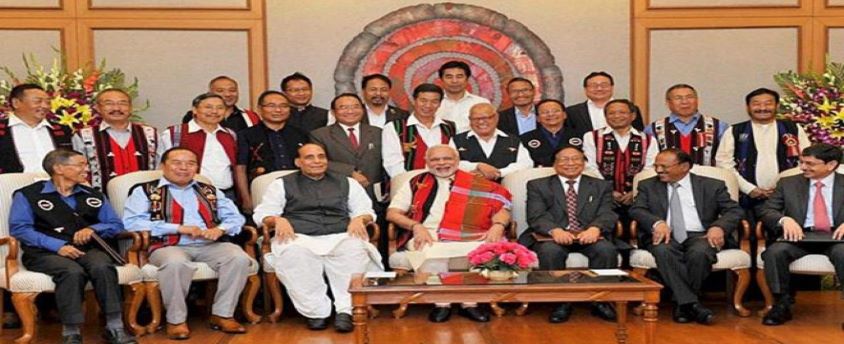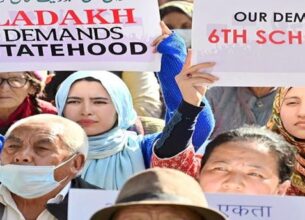Naga Peace Process
25, Feb 2023

Prelims level : Governance - Policies
Mains level : GS-II Functions and responsibilities of the Union and the States, issues and challenges pertaining to the federal structure, devolution of powers and finances up to local levels and challenges therein.
Why in News?
- Nagaland Chief Minister Neiphiu Rio has recently exuded confidence that the ongoing Naga peace talks will reach a “meaningful convergence” under Prime Minister Narendra Modi.
Background:
- The Union government is engaged in discussions with the Isak-Muivah faction of the National Socialist Council of Nagaland (NSCN-IM) and seven Naga National Political Groups (NNPGs) to find a solution to the Naga political issue.
- The outcome of the negotiation is shrouded in mystery since 2015 when the Union Government, under the then interlocutor R. N Ravi, presently the Governor of Tamil Nadu, signed a framework agreement with the NSCN-IM to find a solution to the issue.
- The dialogue between the Union Government and the NSCN-IM collapsed in 2020 when the largest Naga group refused to hold any further talks with Mr. Ravi. Union Home Minister Amit Shah then deputed two Intelligence Bureau officers to carry forward the negotiations.
- A consultative meeting of all stakeholders, including mass-based civil societies, church organisations, tribal hohos, political parties and NGOs, was held at the State Banquet Hall in Kohima on the invitation of the State Government of Nagaland. After the meeting, the House adopted the resolution that “the Naga people are yearning for an early political solution.”
- It added that elections to the Urban Local Bodies (ULB) should be conducted as per the 74th Amendment Act of the Constitution that grants 33% reservation to women. Nagaland had erupted in protests in 2017 against the said reservation.
- The Naga peace talks were also impacted by the incident on December 4, 2021 when six villagers returning from a coal mine were killed in an operation by para commandos of the Assam Rifles in Nagaland’s Mon district. Seven more were killed in Army firing after protests broke out.
- Nagaland and Naga-inhabited areas in neighbouring States saw a shutdown with a strong demand to repeal the Armed Forces (Special Powers) Act (AFSPA), which gives unbridled power to the armed forces to conduct operations.
How old is the Naga political issue?
Pre- independence:
- The British annexed Assam in 1826, and in 1881, the Naga Hills too became part of British India.
- The first sign of Naga resistance was seen in the formation of the Naga Club in 1918, which told the Simon Commission in 1929 “to leave us alone to determine for ourselves as in ancient times”.
- In 1946 came the Naga National Council (NNC), which declared Nagaland an independent state on August 14, 1947.
- The NNC resolved to establish a “sovereign Naga state” and conducted a “referendum” in 1951, in which “99 per cent” supported an “independent” Nagaland.
Post- independence:
- On March 22, 1952, the Naga Federal Government (NFG) and the Naga Federal Army (NFA) were formed. The Government of India sent in the Army to crush the insurgency and, in 1958, enacted the Armed Forces (Special Powers) Act.
Agreement in this regard:
- The NSCN (IM) entered into a ceasefire agreement with the Centre in 1997 and the two have been holding talks since then, while a conglomerate of seven different Naga national political groups (NNPGs) also got into separate talks with the Centre since 2017.
- The Centre signed a “framework agreement” with NSCN (IM) in 2015, and an “agreed position” with the NNPGs in 2017.
- However, the NSCN (IM)’s demand for a separate Naga flag and constitution has been a delaying factor in signing a final deal on the protracted Naga political issue.







